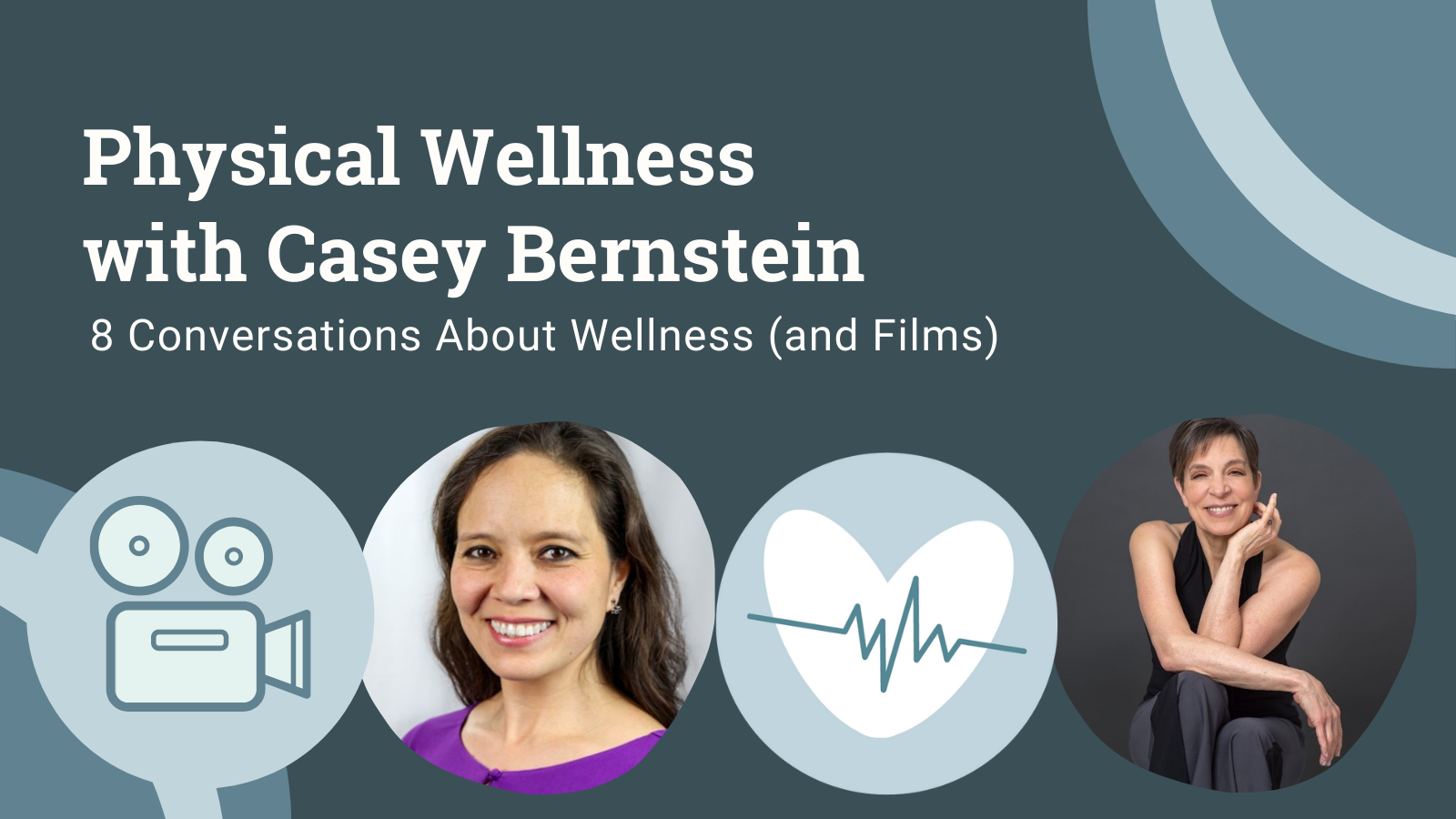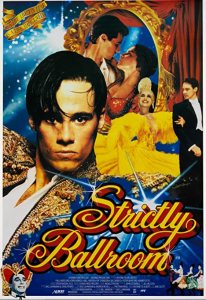By Erika Ihara and Casey Bernstein, RN, Nia Somatic Mover Teacher & Trainer; Owner and Director, Center for Nia and Yoga (Albany, New York)
“Listen to the rhythm.” Strictly Ballroom (Luhrmann, 1992)
Remember the 1992 film, Strictly Ballroom? A champion ballroom dancer and a beginner dance student share in timeless lessons about self-expression through dance, finding courage within, and letting go of rigid beliefs to be able to feel the music and discover “new steps.” In Conversation 2 of “8 Conversations About Wellness (and Films),” I speak with Casey Bernstein, RN, Nia Somatic Mover Teacher & Trainer, about physical movement as it relates to multiple aspects of wellness, recovery, and healing.
Erika: You own a dance studio where you teach classes and train teachers in multiple movement, wellness, and healing modalities. Prior to doing this work, you were a critical care nurse. How do you incorporate elements of these two career perspectives into your current work fostering wellness and recovery through teaching movement classes?
Casey: As a nurse, I worked in multiple specialties, including oncology, urology, maternity, public health, critical care, and pediatric nursing for children with physical disabilities. Working on my master’s degree in nursing helped me solidify in words what I had known from my clinical experience—that my role as a nurse was to bring any patient to their highest level of health and movement potential. Movement heals. For example, I would do range-of-motion therapy with people in critical care who were in a coma because when someone is not moving at all, their body starts to break down. As a nurse, the work I was doing was on the illness continuum, aligning movement therapies with people’s level of illness.
When I found out about Nia, I was attracted to its organic approach to movement. It incorporates martial arts, yoga, dance arts, Moshe Feldenkrais Method, and the Alexander Technique. Through Nia, I’m now able to bring people to their highest level of movement potential, but on the wellness continuum. I feel I am still doing the same work but now operating across body, mind, spirit, and fitness platforms. It was a perfect crossover for me.
Erika: A number of the classes you offer focus on healing and emotional wellness in addition to the purely physical benefits of movement, dance, and exercise. Can you talk about why you choose to focus on both emotional and physical well-being in your approaches to teaching?
Casey: There are three components someone should ideally experience in my class:
- some level of physical conditioning,
- emotional and self-expression, and
- self-healing.
The goal is that people are doing all three simultaneously. Emotion is a form of energy, like physical energy, and it is healthy to move that energy. When I teach a class, I use specific tools to tap into emotional expression, such as choosing specific music and working with specific chakras or energy points that align with emotions. I also incorporate exercises to build capacity for taking emotions objectively, like laughing exercises. Sometimes people are afraid of emotions because they are afraid they are going to get stuck in it. To start to play with an objective emotional resiliency in class gives people the opportunity to befriend their emotions.
Erika: You offer specialized classes and have developed movement curricula for people with histories of trauma, including intimate partner violence survivors, women in recovery from substance use disorders, and people with traumatic brain injuries. From your experience as an instructor, can you share an example of how engaging in guided movement classes can be a meaningful part of a person’s recovery from trauma?
Casey: I have worked with women in recovery for 25 years and have developed many strategies for tailoring classes that are responsive to their needs. When I was starting my Nia career and had my first studio, I felt that people, such as women in rehab, who could benefit greatly from a Nia program were usually the ones who participated the least. I recognized there were many typical barriers, including limited financial resources. When someone is experiencing trauma related to substance use or physical violence, going to a dance class is not their top priority.
I began creating client-centric classes for women who had experienced significant trauma and women with substance use disorders. Safety and ensuring students feel safe is a priority in these classes. I use words like “walk” and “move” instead of “dance,” which for some people is connected with feelings of shame and embarrassment about physicality. The body can be the enemy for people who have survived trauma, and sometimes people don’t want to feel or be present. In my client-centric classes, the entry to becoming present in the body is taken in very small steps. I always incorporate a check-in to determine the appropriate level and type of movement for the group. Sometimes, I work individually with someone who is not ready to do a lot of movement so that each person feels physically safe.
Erika: Your studio is a physical space (and during pandemic times, also a virtual space) for fostering a community of students and instructors. In fact, some of the instructors you work with were once your students. What’s your philosophy on fostering community as part of supporting wellness?
Casey: Creating community has been a hallmark of my studio. My studio is a place for like-minded people who see the benefits of a kinesthetic experience to connect with each other. People come here to lose weight or for the movement classes. Many come away with so much more because of the opportunities for emotional expression and connecting with community. In Nia, we hold sessions called “free dance,” where people gather in a group, each person individually engaging in free movement. Experiencing the joy of movement individually, while in a group creates a place of safety for people.
I also craft specific studio offerings to create community, incorporating singing together in class, circle dances, themed classes, and a weekly holding space for women to meet and share confidences. These connections have continued even on Zoom during the pandemic.



